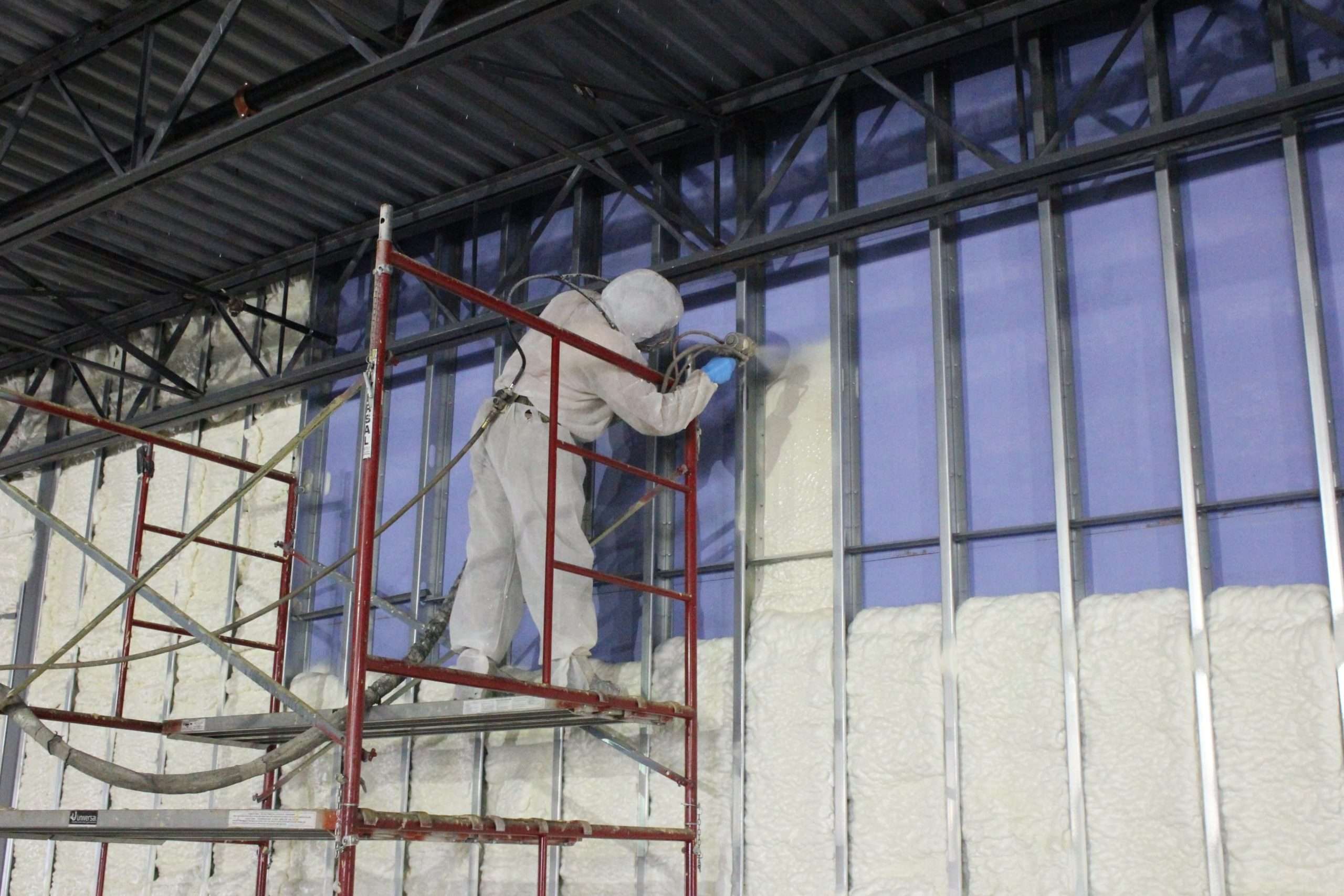Mold growth is a major concern for homeowners and building managers, particularly in areas with high humidity or frequent exposure to water. Mold not only damages property but also poses significant health risks. Spray foam insulation is one of the best solutions for preventing mold growth. In this article, we will explore how does spray foam insulation prevent mold growth.
How Spray Foam Insulation Prevents Mold Growth
- Air and Moisture Barrier: Closed-cell spray foam acts as an effective air and moisture barrier. Sealing gaps, cracks, and holes in a building’s envelope prevents moisture-laden air from infiltrating the structure. This reduction in humidity levels significantly lowers the chances of mold growth. Open-cell spray foam, while less effective as a moisture barrier, still helps reduce air leakage, indirectly controlling humidity levels. However, in areas prone to high moisture exposure, closed-cell spray foam is often the better choice.
- Resistant to Water Absorption: Unlike fiberglass or cellulose insulation, spray foam does not absorb water. Even if a leak occurs, the foam remains intact, preventing water from pooling and fostering mold growth. Closed-cell spray foam, in particular, is highly water-resistant, making it suitable for basements, crawlspaces, and other areas prone to moisture.
- Improved Energy Efficiency: By providing superior insulation, spray foam reduces energy consumption and maintains consistent indoor temperatures. Lower humidity and well-regulated temperatures create an environment less conducive to mold growth.
- Fewer Organic Materials: Spray foam insulation itself is not a food source for mold. Traditional insulations, combined with dust and organic debris, often support mold colonies. Spray foam’s non-organic composition adds an extra layer of protection against mold.
Also Read: Is Spray Foam Insulation Right for Older Homes?
The Relationship Between Mold and Moisture
Mold requires three key elements to grow:
- Moisture: Mold thrives in damp environments.
- Food Source: Organic materials like wood, drywall, or dust provide sustenance.
- Suitable Temperature: Mold typically grows in temperatures ranging from 60 to 80 degrees Fahrenheit.
Moisture is the most controllable factor, and managing it effectively can significantly reduce the likelihood of mold growth. Traditional insulation materials, such as fiberglass or cellulose, often absorb moisture, creating a breeding ground for mold. In contrast, spray foam insulation offers distinct advantages in this regard.
Applications of Spray Foam Insulation for Mold Prevention
Spray foam insulation can be applied to various areas of a building to prevent mold:
- Attics and Roofs: Sealing attic spaces prevents warm, humid air from entering and condensing, which could lead to mold growth.
- Basements and Crawlspaces: Closed-cell spray foam is ideal for these areas due to its water-resistant properties. It keeps moisture out and helps maintain a dry environment.
- Walls: Filling wall cavities with spray foam prevents air infiltration and helps control humidity levels within the home.
- Around Windows and Doors: Spray foam effectively seals gaps around openings, preventing water and air leakage.
Limitations of Spray Foam Insulation in Mold Prevention
While spray foam insulation offers advantages in mold prevention, it is not a standalone solution. Consider the following limitations:
- Proper Installation is Important: Improper installation can create voids or gaps that allow air and moisture to penetrate, negating the benefits of spray foam. Always hire trained professionals for application.
- Pre-existing Moisture Issues: Spray foam cannot resolve existing water damage or mold problems. These issues must be addressed before insulation is installed to prevent trapping moisture within walls or other areas.
- Cost: Spray foam insulation is more expensive than traditional insulation materials. While it offers long-term savings through energy efficiency and reduced mold risk, the upfront cost can be prohibitive for some homeowners.
- Ventilation is Still Necessary: Although spray foam minimizes air leakage, adequate ventilation is essential for maintaining indoor air quality and preventing moisture buildup. An overly sealed building without proper ventilation can create other humidity-related problems.
Mold Prevention Beyond Insulation
For mold prevention, spray foam insulation should be part of a comprehensive moisture management strategy that includes:
- Repairing Leaks: Address roof, plumbing, and foundation leaks promptly.
- Controlling Humidity: Use dehumidifiers and ensure proper ventilation, especially in high-moisture areas like bathrooms and kitchens.
- Improving Drainage: Ensure gutters and downspouts direct water away from the foundation.
- Regular Maintenance: Inspect and maintain HVAC systems, plumbing, and insulation to prevent moisture buildup.
Contact Foam Insulation Solution for Spray Foam Insulation
Spray foam insulation plays an important role in preventing mold growth by creating an airtight, moisture-resistant barrier and reducing humidity levels within a building. At Foam Insulation Solution, we provide trusted and reliable spray foam insulation services. Our team has the right tools and equipment for smooth and durable application of foam insulation.
Feel free to contact us anytime and learn more about our services.







